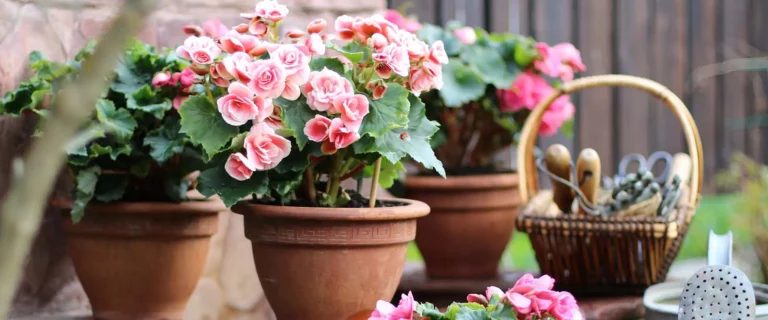Just as important as keeping the “green” part of your container garden thriving in winter, is knowing how to keep your containers in good shape. Sean, our horticulture guru here at The Gardener’s Center, says it all depends on a couple things:
What are your containers made of? And where are they located?
Sean tells us which pots are the most and the least likely to make it through winter, and what you can do to give them the very best chance at surviving.
Like we’ve explained with the plants, it’s not the cold temperatures that present a danger, it’s the freezing of the water in the soil that prevents the plants from drinking. Interestingly enough, it’s not the cold that’s damaging your pots in this case either. It’s the fact that it doesn’t stay cold on the shoreline in Connecticut during the winter months. It’s the freeze/thaw cycle that causes all the damage. And that’s true for some pots more than others.
Group 1: Terracotta Pots
Spoiler alert… Terracotta pots are the least likely to survive a winter outside. They have an “Achilles heel”—they’re porous so they absorb water. This is a major problem because of the freeze/thaw cycle. If there’s a warm spell in the winter and it rains, and the terracotta pot then absorbs that water, and then 12 hours later it’s 10 degrees as often happens in Connecticut, the water in the pot will freeze. And then the next time it thaws, the pot will crack or flake or crumble.
Terracotta pots should always be brought inside or covered for the wintertime. Sean wants you to know that doesn’t mean they have to go in your living room (thanks, Sean!), but put them in a garage, basement, under a deck or somewhere where they’re protected from the elements.
This is also true for higher-quality terracotta pots, whether they’ve been fired at a higher temperature or are glazed; they’re still porous and can get wet, even if it’s just on the inside of the pots.
Group 2: Cast Stone or Concrete Pots
Concrete or cement (or cast stone) pots are quite durable and can survive well outside over the wintertime, but it’s best if they’re empty. Sean has cast stone pots at his house that he’s had for 14 years, and he says they’re as good as the day he got them.
Here’s the secret to keeping cast stone or concrete pots for a long time:
- Empty them over the winter.
- Make sure the drain is clear. So often a “dirt plug” forms in the hole and gets ignored. This “cork” then freezes and causes issues.
Group 3: Fiberglass and Lichen Fiber Pots
Fiberglass pots are usually good to leave out all winter. The lichen fiber pots are composite pots, made of cement and fiberglass, and are also good to leave out. Many times they’re labeled “frost proof” or “frost resistant,” and Sean reminds you that doesn’t mean they’re “freeze proof.”
If you’re leaving these pots outside in the winter, be sure to get them up off the ground. The reason is that if you leave them on the ground, the drain holes will get blocked, and with the freeze/thaw cycle and some rain thrown in, you end up with ice blocks in your pots. Because water expands when it freezes, your pots will break. To prevent this process, get your pots off the ground and keep the drain holes clear by using pretty pot feet under them or even simple lumber risers.
Group 4: Plastic Pots
Plastic pots are probably the sturdiest of all when it comes to overwintering. They’re also typically inexpensive, so if you do lose them, it’s not a big hit to the pocketbook. Like with the rest of the pots, be sure the pots are empty and can drain.
Group 5: Statues and Other Decorations
Garden statuary, art and bird baths also need to be addressed. Why? They, too, are very vulnerable to freeze/thaw cycles, especially if they’re sitting in soil or mulch. During a warmer, rainy winter day, they will wick moisture out of the ground because they’re porous, and then the temperature drops and the water freezes, causing cracks and crumbles.
For bird baths in particular, while many people worry about the “bath” bowl itself, putting warmers in the water so it doesn’t freeze, they forget about the base. It’s the base that will wick moisture out of the ground and then it freezes and, well, you get the picture.
The Final Word…
If you have pots outside that don’t need to be outside, bring them in or cover them. If you have pots under any kind of cover—a porch or portico—those pots, regardless of the material, are usually okay for the winter. (Remember, it’s not simply the cold, it’s the precipitation and the freeze/thaw cycle that cause all the problems.)
Just like your plants, be sure to give your pots the proper care and attention and they’ll also return the love.
We have lots of info to keep you informed and inspired… You can count on your friends at The Gardener’s Center!









